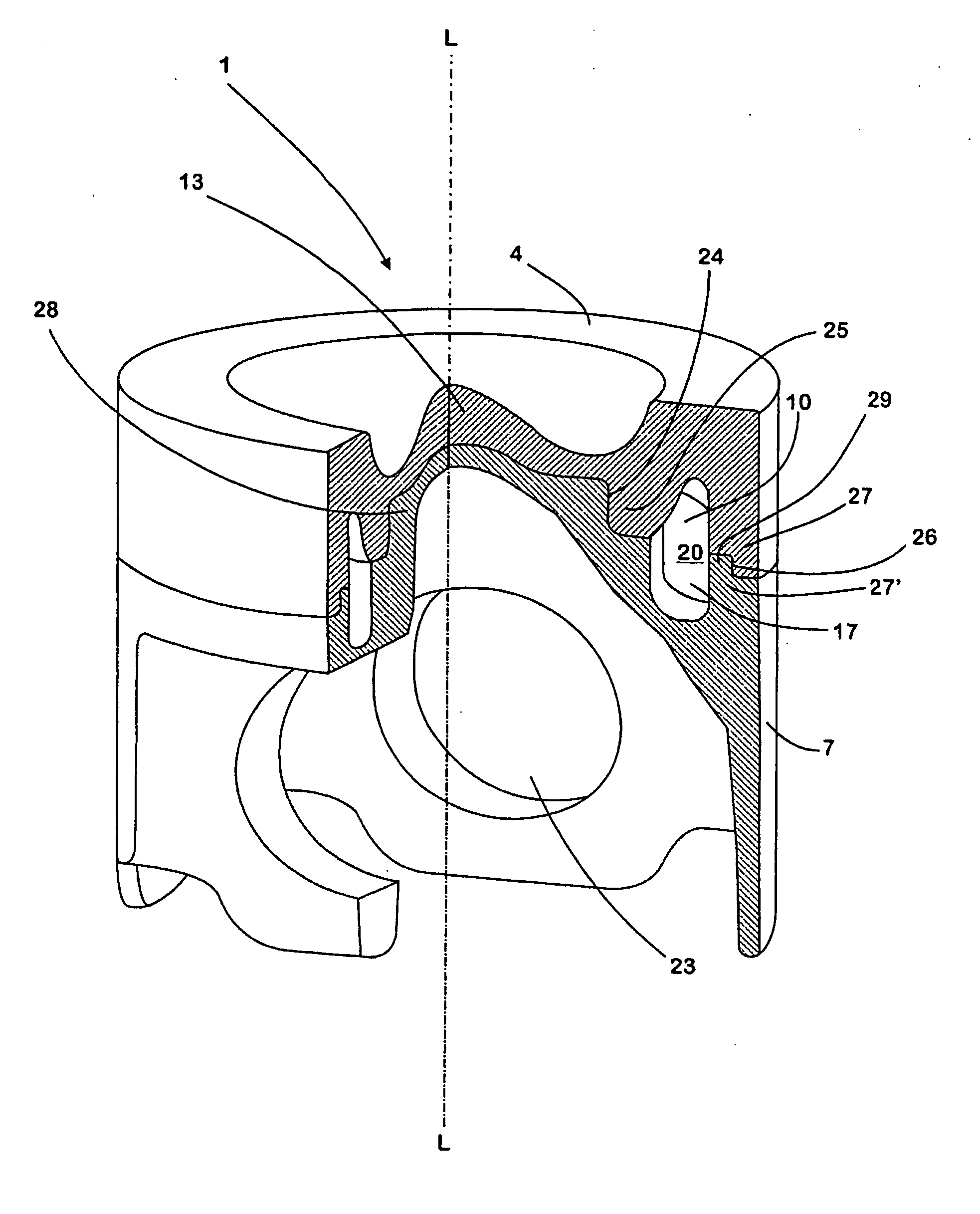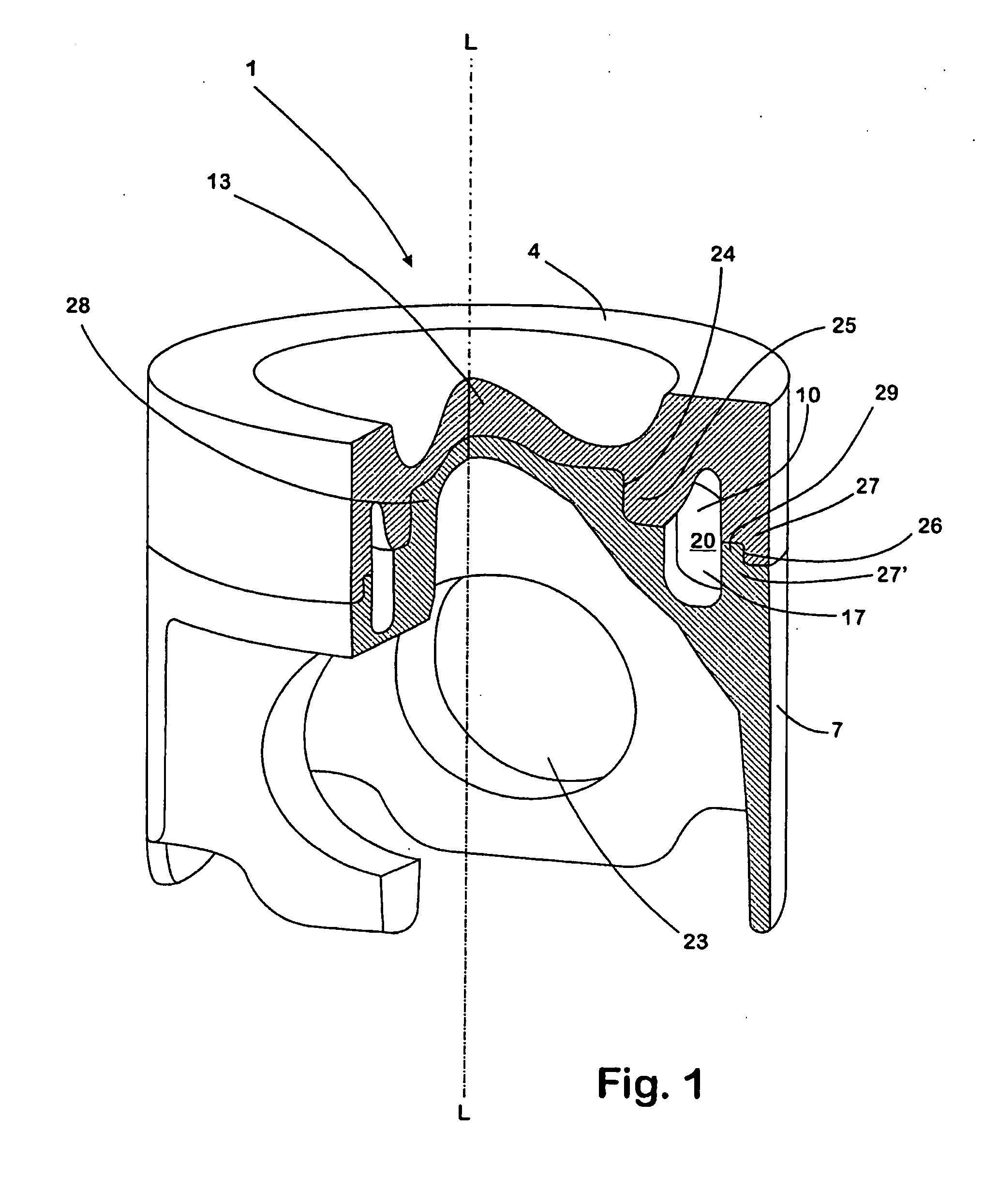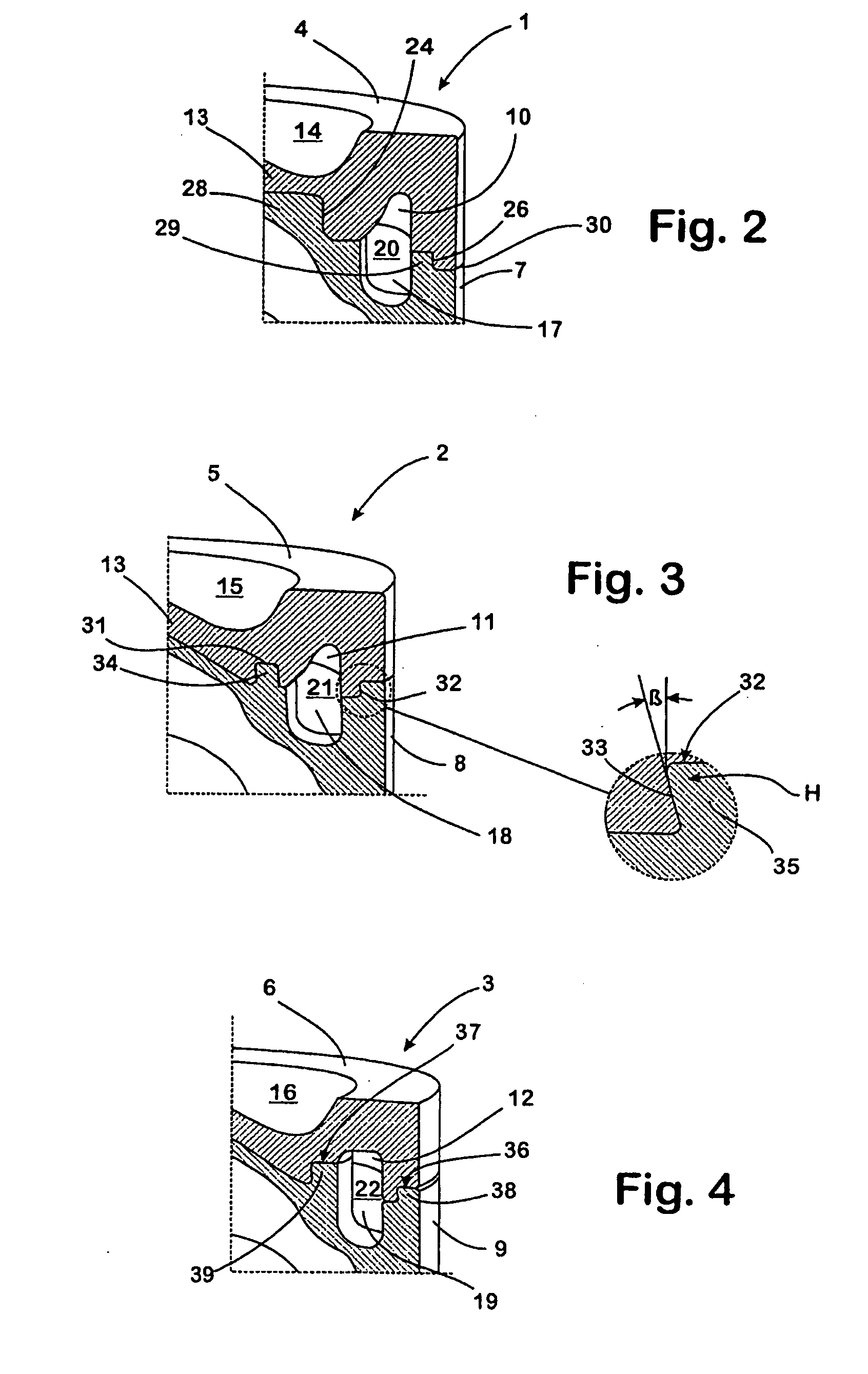Piston for an Internal-Combustion Engine and Method for Manufacturing a Piston of this Type
a technology of internal combustion engine and piston, which is applied in the direction of engine components, machines/engines, mechanical apparatus, etc., can solve the problems of considerable thermal load on the heads of the pistons inserted therein, complex assembly of the known piston, and inability to allow considerable production costs, etc., to achieve good sliding properties, less force, and deformation
- Summary
- Abstract
- Description
- Claims
- Application Information
AI Technical Summary
Benefits of technology
Problems solved by technology
Method used
Image
Examples
Embodiment Construction
[0043]The pistons 1 to 3 shown in the figures are each of two-part construction, including a piston head part 4, 5, 6 and a piston skirt part 7, 8, 9. The piston head parts 4, 5, 6 are formed of a high- strength steel, such as stainless steel, whereas the piston skirt parts 7, 8, 9 can be made of a steel that is less strong but is highly deformable, or of a light material, such as aluminum.
[0044]The piston head parts 4, 5, 6 and the piston skirt parts 7, 8, 9 have each been pre-produced by forging. During the pre-production process, there is formed into the underside of the piston head parts 4, 5, 6, associated with the respective piston skirt part 7, 8, 9, an annular depression 10, 11, 12 in the form of a groove that encircles the central region 13 of the respective piston head part 4, 5, 6. A combustion cavity 14, 15, 16, which is configured in a manner known per se, is also formed at the free upper side of the piston head parts 4, 5, 6.
[0045]In the upper side of the respective pi...
PUM
| Property | Measurement | Unit |
|---|---|---|
| temperature | aaaaa | aaaaa |
| temperature | aaaaa | aaaaa |
| shape | aaaaa | aaaaa |
Abstract
Description
Claims
Application Information
 Login to View More
Login to View More - R&D
- Intellectual Property
- Life Sciences
- Materials
- Tech Scout
- Unparalleled Data Quality
- Higher Quality Content
- 60% Fewer Hallucinations
Browse by: Latest US Patents, China's latest patents, Technical Efficacy Thesaurus, Application Domain, Technology Topic, Popular Technical Reports.
© 2025 PatSnap. All rights reserved.Legal|Privacy policy|Modern Slavery Act Transparency Statement|Sitemap|About US| Contact US: help@patsnap.com



